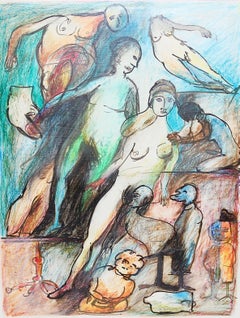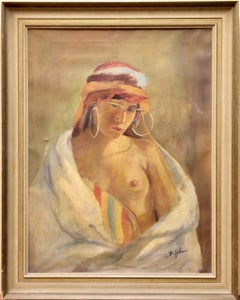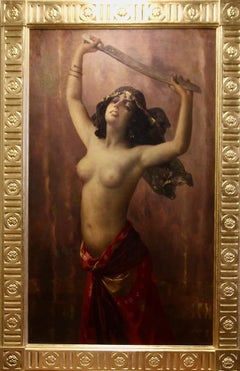Germany - Nude Paintings
to
24
5
13
19
1
25
Overall Width
to
Overall Height
to
3
4
7
49
1
1
1
1
41
4
3
2
1
1
1
42
11
10
48
35
23
21
18
6
6
5
3
3
3
2
2
2
2
2
1
1
1
1
62
56
55
48
48
39
4
2
2
1
18
1
1,581
1,571
Item Ships From: Germany
RYSZARD GRODNICKI, original Abstract painting, acrylic colors. Expressionist.
By Ryszard Grodnicki
Located in Berlin, DE
RYSZARD GRODNICKI, Abstract painting, original painting, acrylic colors.
Dimensions with frame.
We offer another painting by this artist.
Born in Gdańsk in 1947. In 1971-76 stud...
Category
20th Century Abstract Expressionist Germany - Nude Paintings
Materials
Acrylic
Antique Oil Painting, Bruno Jüttner, Nude of a North African young Lady
Located in Berlin, DE
Antique oil painting, Bruno Jüttner, nude of a North African young lady
Rare half-nude by the well-known German painter.
Age-related condition. A pressure mark in the center left....
Category
20th Century Germany - Nude Paintings
Materials
Canvas, Oil
Otto Theodore Gustav Lingner, Oriental female nude, bride dancing with a Sword
Located in Berlin, DE
Otto Theodore Gustav Lingner, Oriental female nude dancing with a sword,
Dimensions without frame 80 cm x 136 cm
Measures with frame 102cm x 157cm
An outstanding work of art by Ott...
Category
19th Century Germany - Nude Paintings
Materials
Canvas, Oil


